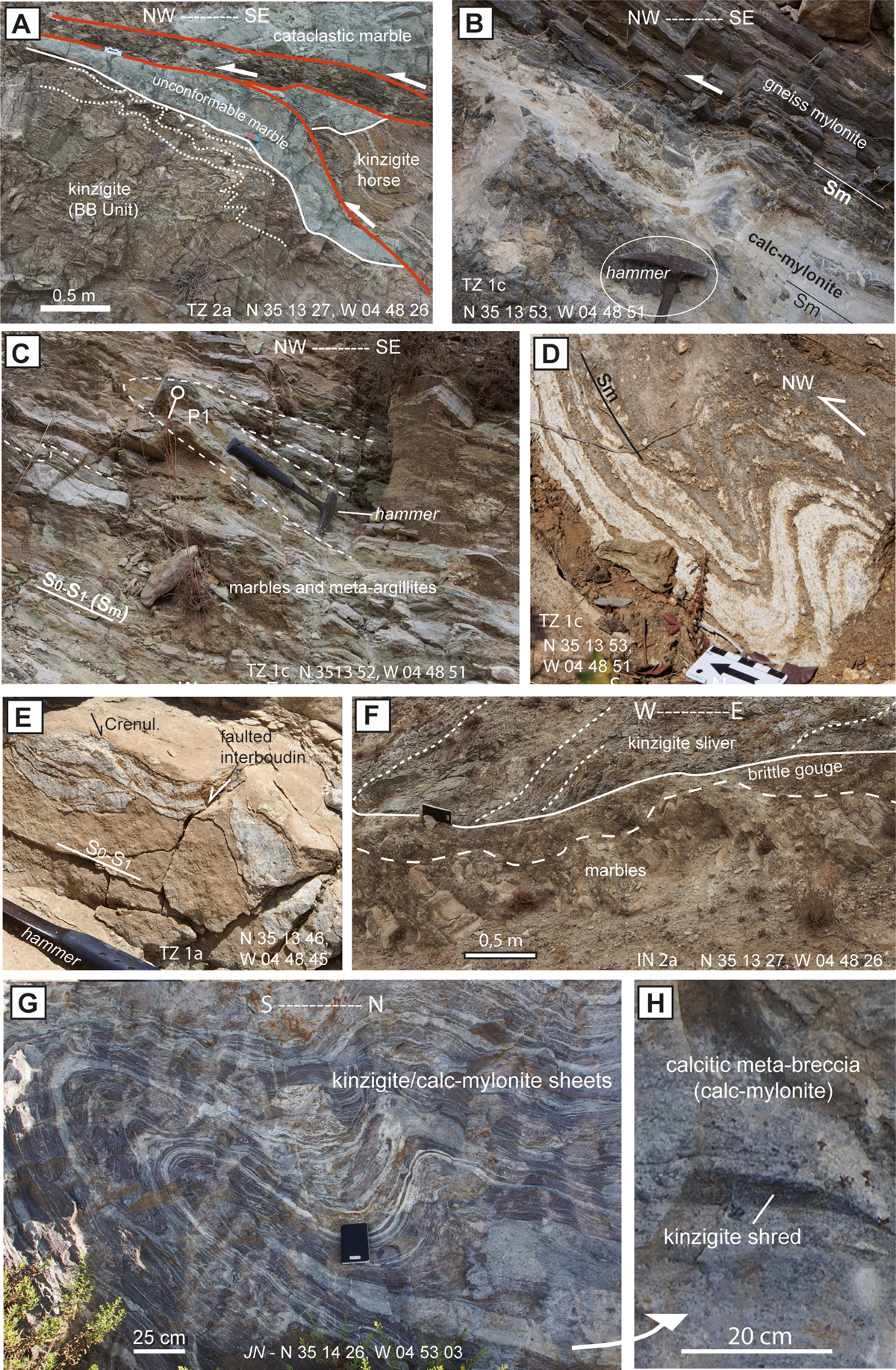Fig. 7

Download original image
Structure of marble lenses (see location in Fig. 5, except for G and H, located in Fig. 4). Sm: main foliation, which corresponds to bedding S0 transposed in the mylonitic foliation S1. A: Lower boundary of marble lens 2a. B: Upper boundary of marble lens 1c. C: Early isoclinal folds in the lower part of the 1c lens. Compare with the late folds exposed in a neighboring outcrop (Fig. 6B). D: Northwest verging asymmetric fold in the mylonitic zone on top of the marble lens 1c; the fold deforms boudinaged silica-rich beds (white) interleaved in the carbonate matrix. E: Boudinage and flattening of a silica-rich bed in the marble lens 1b. Notice the late crenulation and minor fault structures. F: Late normal-sinistral fault crosscutting the marble lens 2a and the overlying kinzigite horse. The fault dips ∼40° to the N. G: Ductile, multiple folding and brecciation of the JN marbles about 50 meters to the north of outcrop (Fig. 6E). The dark sheets and shreds are composed of kinzigite-like material, the white sheets and the breccia matrix correspond to calc-mylonite. H: Detail of the calc-mylonitic meta-breccia in the core of the major isoclinal fold shown in (G), a few meters to the north.
Les statistiques affichées correspondent au cumul d'une part des vues des résumés de l'article et d'autre part des vues et téléchargements de l'article plein-texte (PDF, Full-HTML, ePub... selon les formats disponibles) sur la platefome Vision4Press.
Les statistiques sont disponibles avec un délai de 48 à 96 heures et sont mises à jour quotidiennement en semaine.
Le chargement des statistiques peut être long.




